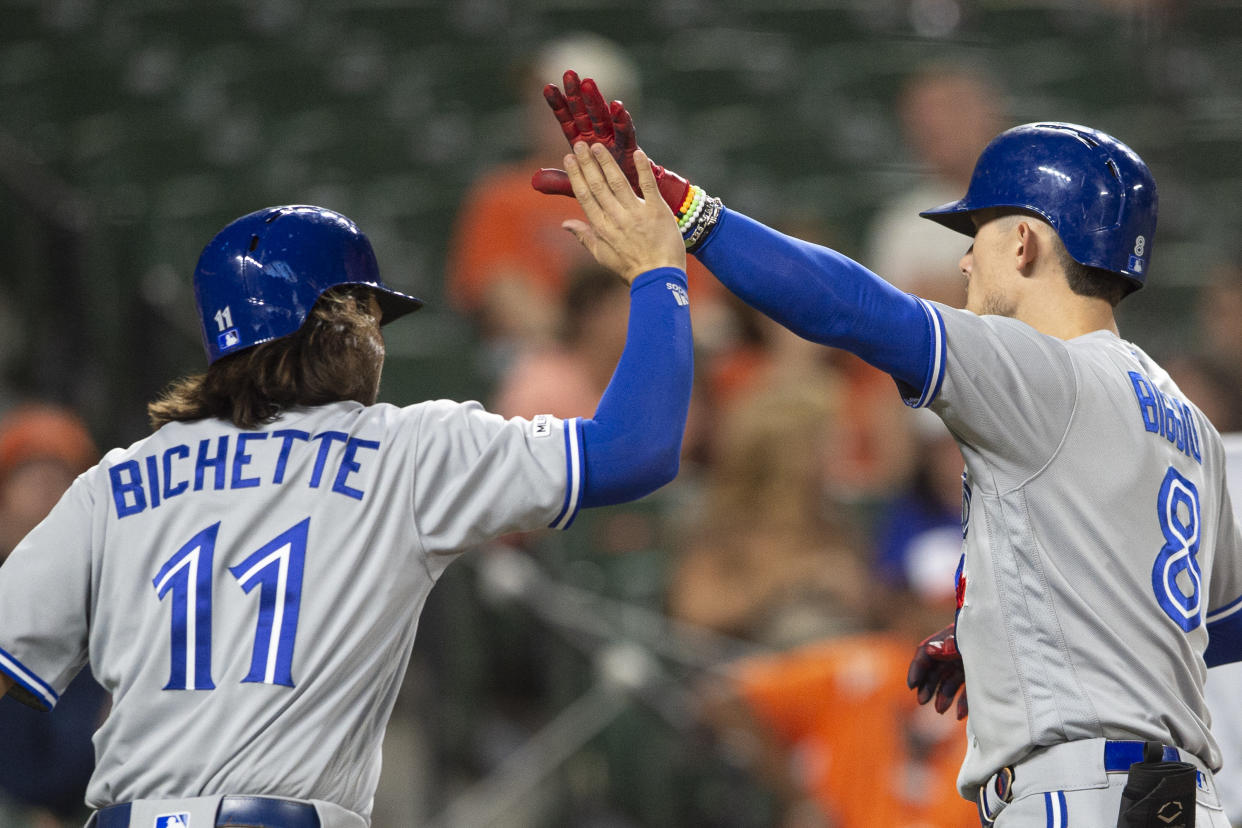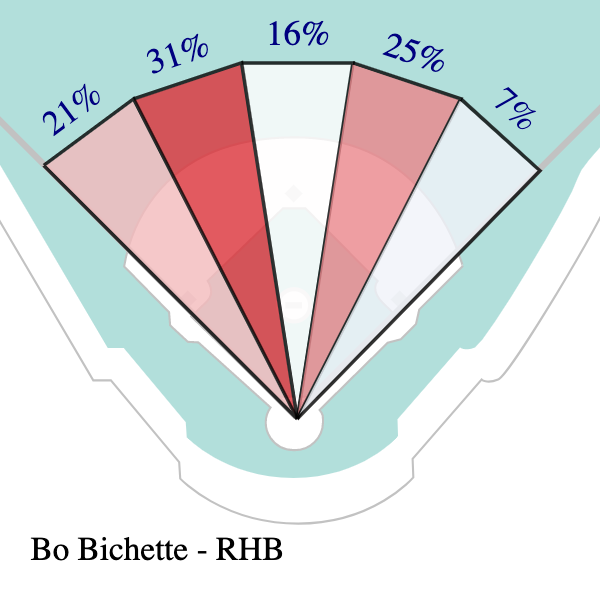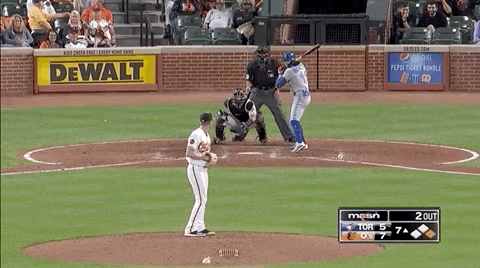Bo Bichette is making himself exceedingly difficult to defend

While Randal Grichuk captured headlines on Wednesday night with his late-game heroics, Bo Bichette continued to go about his business.
Specifically, Bichette is in the business of racking up hits. With a 3-for-6 night the rookie shortstop brought his season total to 61 knocks, the fifth-best mark in the majors since he debuted on July 29.
Because the 21-year-old doesn’t take too many walks and his strikeout number is reasonable - if slightly above-average - it’s not too surprising he’s racking up hits. The extra at-bats he gets from hitting leadoff don’t hurt either.
While hits as a raw total are a bit of can be a misleading stat, but there’s no arguing with the .316/.361/.580 line Bichette has managed thus far. Because it’s not a line bolstered by too many walks, his offensive profile is reliant on hitting the ball with consistency and authority.
Bichette’s big swing makes it tempting to assume he’s succeeding because he’s making mighty contact. To some extent that’s true. His 89.8 m.p.h. average exit velocity is more than two m.p.h. above the league average. However, how he’s placing the ball has also been crucial.
Here’s Bichette’s spray chart:

Or, put another way, his numbers by hit direction:

He’s hit a few more home runs to the pull side, but overall he’s shown that he can cause serious damage to any part of the field. As a result, Bichette is extraordinarily difficult to defend. The rookie has been shifted just 2.9 percent of the time.
Even when he’s hitting the ball on the ground he has the ability to spray it. This is what his infield slice chart looks like:

His seventh inning RBI single on Wednesday went precisely in that second base gap, providing a salient example of why that area cannot be vacated.

There are a lot of hits in that lane of the infield if runners are on first base or the teams have the gall to attempt a shift. The fact Bichette seems able to go there with regularity is a real asset.
What’s interesting about Bichette’s all-fields mastery is that he doesn’t use the whole plate the way he uses the whole field. It’s clear the shortstop prefers pitches on the inside as opposed to those on the outside corner, meaning he isn’t just ‘hitting the ball where it’s pitched’.
That tendency shows up in his Expected Batting Average by zone:

Bichette hunts and thrives against the pitches in the same area all the time, he’s just able to do send them around the park. It’s an approach that’s reminiscent of Josh Donaldson, who is notorious for hunting middle-in pitches almost exclusively, but is virtually shift-proof because he can take them anywhere.
For example, arguably the most impressive home run of Bichette’s young career came on a pitch on the very inner edge of the plate in the middle off Domingo German. The bomb travelled 441 feet at a blistering 107.5 m.p.h.:

Two weeks later in Seattle, Bichette was faced with an identically-located pitch from Mariners reliever Zac Grotz. He didn’t replicate his feat, but instead managed a hit that heavily contrasted his epic round tripper.

That single wasn’t some epic piece of hitting and he was a little lucky to see it fall in (though the Expected Batting Average on it was a respectable .370), but it does show Bichette’s ability to inside-out a pitch to right - an unnatural action for a lot of hitters.
As long as Bichette doesn’t walk a tonne and strikes out his fair share, he’s going to need to have more balls than average fall in for hits to be an elite offensive performer. So far, that’s been the case as he carries a .373 BABIP - and while that number may not be sustainable he’s got the tools to keep it well above average.
Bichette’s speed and power will contribute to that, and both skills have been apparent from Day 1. Now, we’re seeing the rookie’s penchant for using the whole field - which looks like a critical piece of the puzzle.
More Blue Jays coverage from Yahoo Sports Canada



